Featured image: Ipswich ware pottery vessels and fragments, previously excavated from Suffolk
As part of the Rendlesham Revealed project, Suffolk County Council Archaeological Service are working with volunteers to build and fire an Anglo-Saxon Ipswich ware kiln to make replica Ipswich ware pots. This article is the first of the “Being Anglo-Saxon” series.
This experimental archaeology work is very exciting as building and firing an Anglo-Saxon Ipswich ware kiln has never been attempted before. Archaeological evidence from past excavations in Ipswich will be used to inform the structure of the kiln and the form and fabrics of the pots. Other examples of experimental Roman kilns also give guidance on the practical aspects of building and firing kilns, such as the Aylsham Roman Kiln Project.
Leading this project is Keith Wade (retired county archaeologist and specialist in the Anglo-Saxon archaeology of Ipswich) and Duncan Allan from Hands on Heritage. We are also extremely grateful for the input and hard work of the volunteers from the Anglian Potters, without whose expertise and knowledge this project would not be possible, and thanks also goes to our other local volunteers.
Together we have spent many hours researching the best materials for the job and identifying local sources of clay. London clay has kindly been donated to the project by Tarmac for the replica Ipswich ware pots. Boulder clay has been sourced from Bulmer Brick and Tile Company for the construction of the kiln structure. We would like to thank both TARMAC and the Minters of Bulmers for their invaluable help and support with this project.

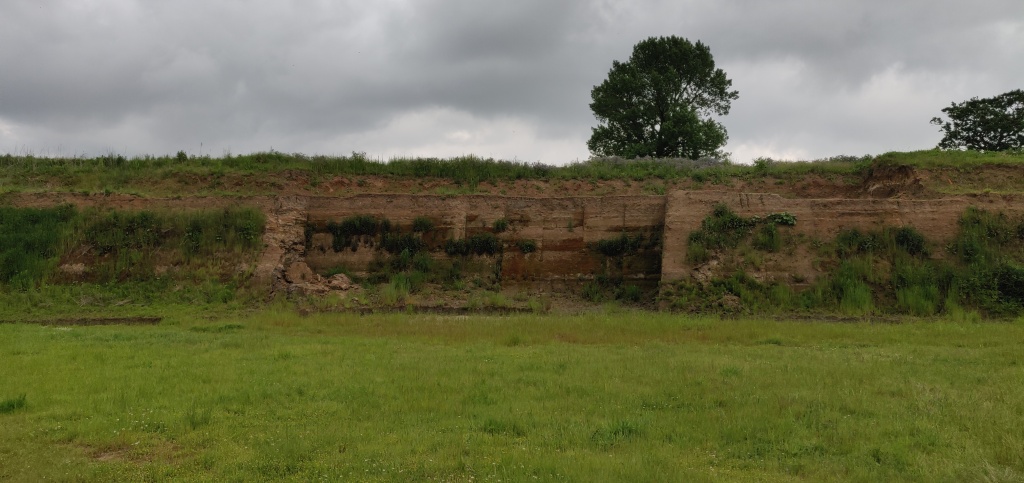
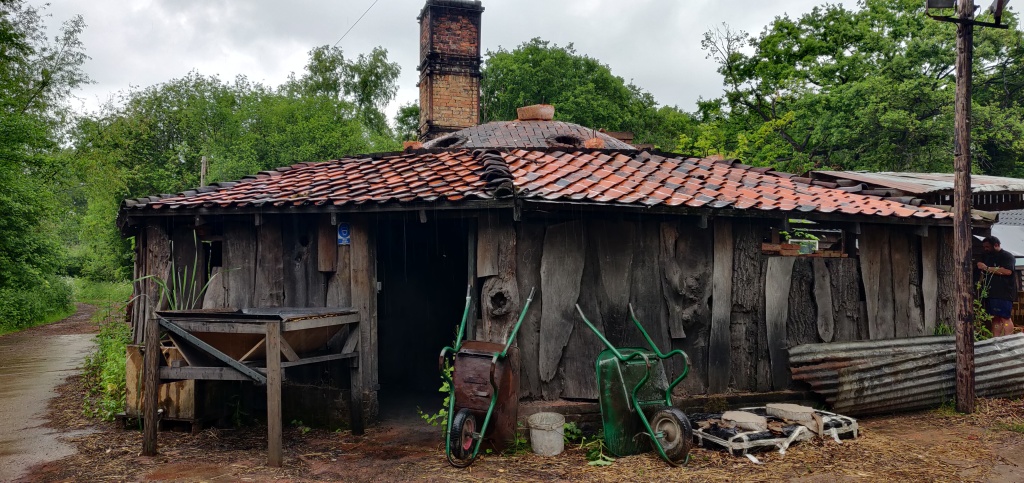
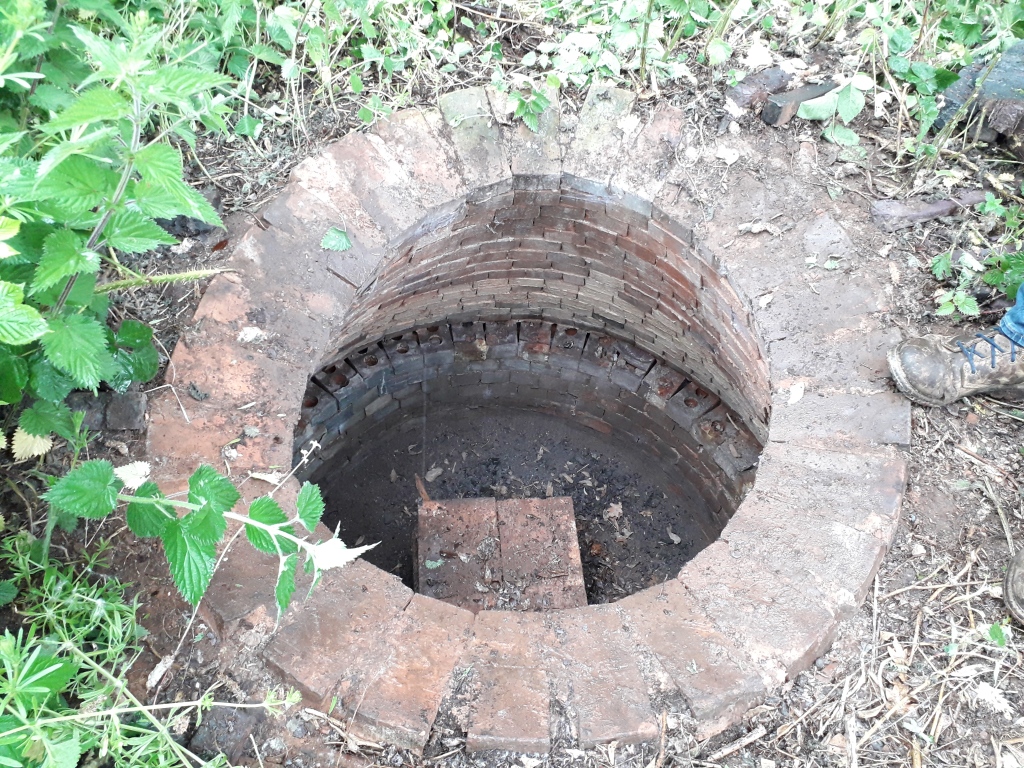
The main aim of the project is to use the archaeological evidence to find out if we can manufacture Ipswich ware pottery, with the same form and colour as archaeological examples in a kiln based on excavated examples. The big question when we fire it is “will it work?”
There are many other more detailed experimental questions we also hope to address. In our next blogs we will hear from one of our volunteers from the Anglian Potters who has been experimenting with different clay processing and pottery making methods, to achieve replica Ipswich ware pots. Keep an eye out for future blog posts on this.



What is Ipswich ware?
Ipswich ware pottery was made in Ipswich from c. AD 680-870. It was mass-produced and distributed throughout eastern England. The industry must have used the adjacent clay sources, such as Reading Clay or London Clay. Ipswich ware pots are baggy with simple out-turned rims. Bases of cooking pots and pitchers are “sagging”. A slow wheel or hand turntable was used in the Anglo-Saxon period to make the pots. The body of the pot was built up and a slow wheel used to shape. The pot was cut from the wheel and once dried a little the heavy base slab was trimmed to shape. It is nearly always grey in colour, possibly reduced by controlling oxygen entering the kiln during the kiln firing process.
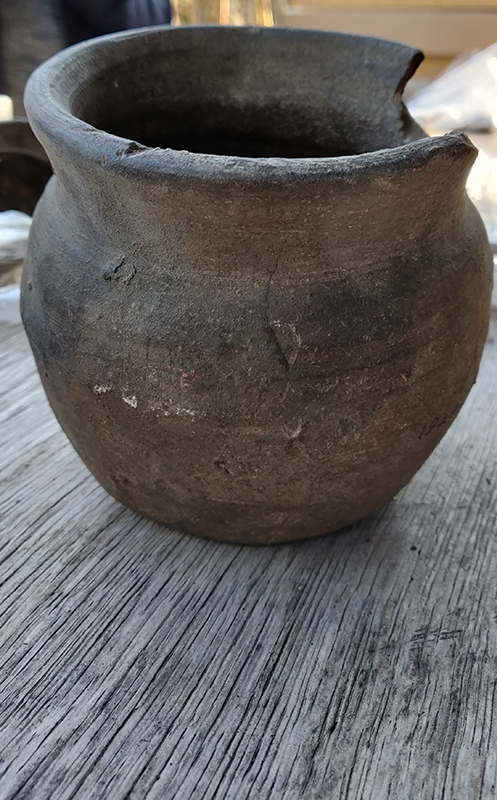
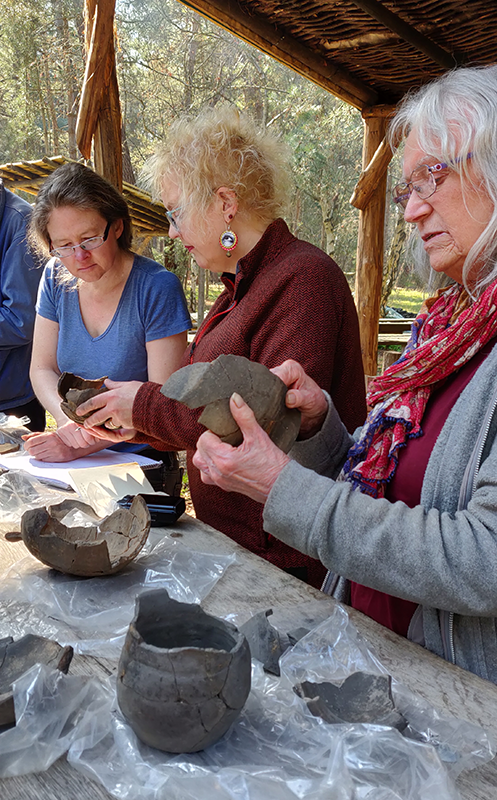
What do we know about Ipswich ware kilns?
Only two Ipswich ware kilns have been excavated in Ipswich, one in the Buttermarket and one at Stoke Quay. For the experimental kiln, we are using the archaeological evidence of the Buttermarket kiln.
Ipswich ware kilns were mainly single flue up-draft kilns set into the ground with ovens and stoke pits and with firing platforms for the pots. Arches were used to form air vents. The walls of the excavated Ipswich ware kilns show that these were constructed with clay “blocks”. The dome of the kiln is constructed later, by weaving a Hazel frame and wet clay after the kiln has been loaded with pots. When making the roof, a hole is left for the chimney.
For Ipswich ware, the kiln will need to reach up to 900 degrees, at which point the flue needs to be blocked to reduce the pot fabrics to its characteristically grey colour.
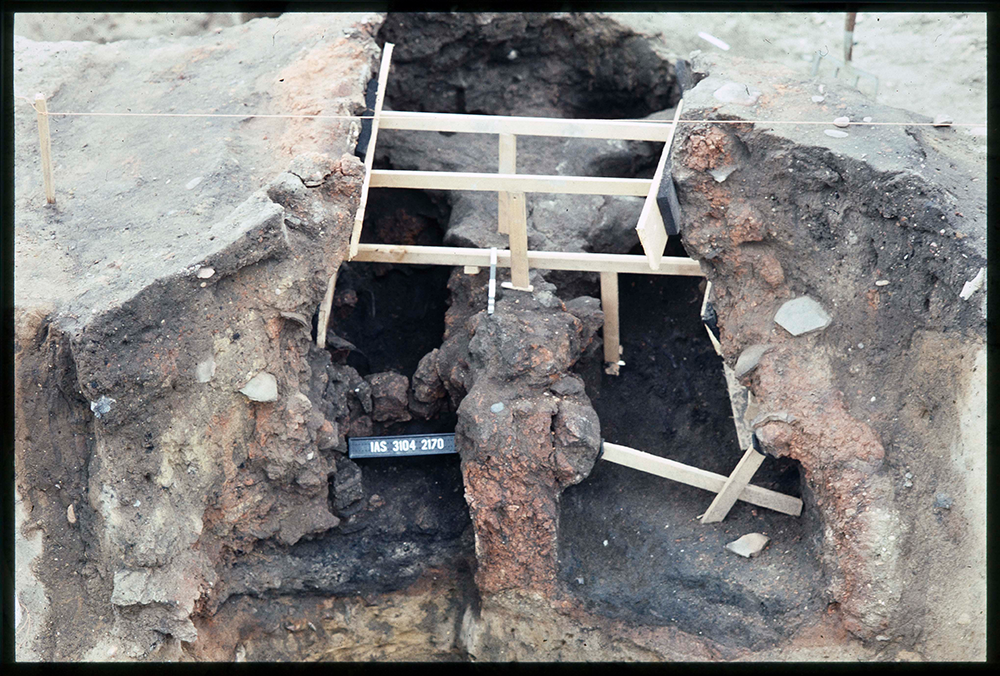
Find out more
Keep an eye out on this blog for future updates as part of the “Being Anglo-Saxon” series, which will follow the journey of the volunteers who have been experimenting with clay processing, pot making and kiln construction.
Discover more about the Rendlesham Revealed project
Explore the excavation archive for Ipswich
Learn more about different pottery forms and fabrics with the Pottery Type-Series for Suffolk and Norfolk
This experimental archaeology project is part of the community archaeology project Rendlesham Revealed: Anglo-Saxon Life in South-East Suffolk, funded by the National Lottery Heritage Fund. We are very grateful to our many local and national partners who have made this project possible, and for the support of our volunteers and of the landowners and farmers who work and manage this historic landscape.






